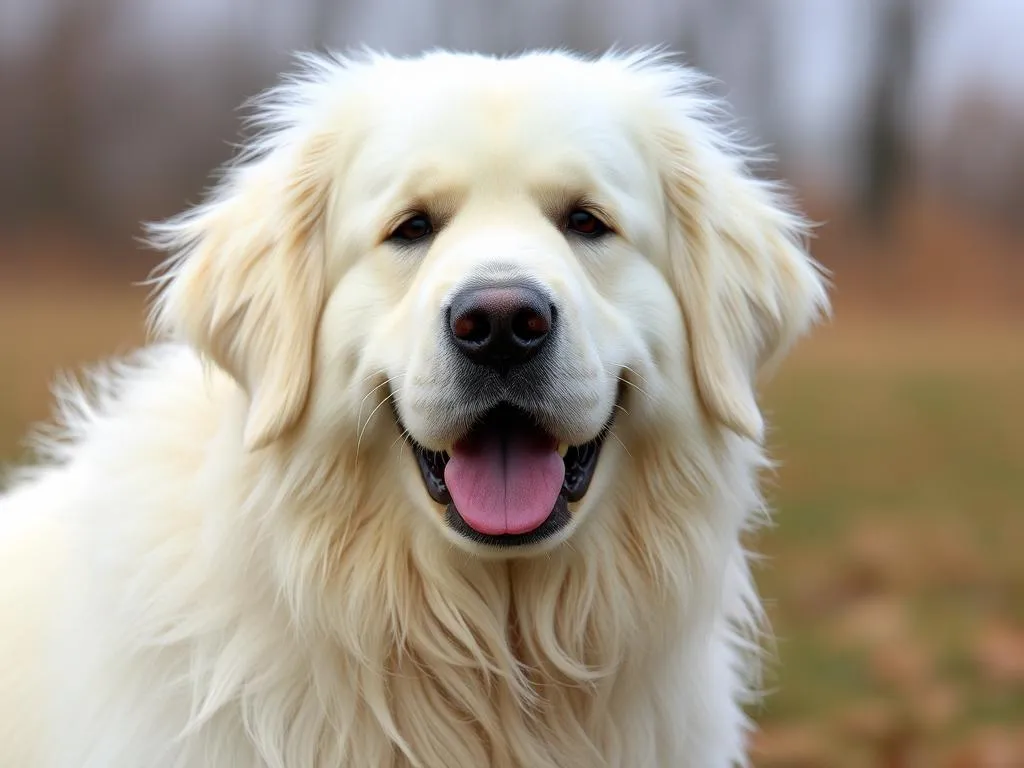
Introduction
The Great Pyrenees is a majestic breed known for its impressive size, thick double coat, and gentle demeanor. Typically weighing between 85 to 115 pounds and standing 25 to 32 inches tall, these dogs are as large as they are lovable. Bred to guard livestock in the mountainous regions of France and Spain, their history is steeped in a strong protective instinct.
Training a Great Pyrenees can be a rewarding experience, but it comes with its unique challenges. With their independent nature, they often require a dedicated and patient owner who understands the importance of proper training. Proper training not only ensures their safety and obedience but also fosters good socialization habits. However, understanding the inherent traits of the breed is vital for successful training.
Understanding the Great Pyrenees
General Characteristics
Size and Weight
Great Pyrenees are large and powerful dogs. Males typically weigh between 100 to 115 pounds, while females range from 85 to 100 pounds. Their height can vary, with males standing about 27 to 32 inches and females about 25 to 29 inches.
Coat Type and Grooming Needs
The breed’s thick, weather-resistant double coat is a defining feature. It requires regular grooming to prevent matting and reduce shedding. Brushing at least once a week is recommended, with more frequent grooming during shedding seasons.
Temperament and Behavior Traits
Great Pyrenees are known for their loyal, gentle, and affectionate nature. They can be independent thinkers, often requiring encouragement to follow commands. Their protective instincts make them excellent family guardians, yet they can be somewhat aloof with strangers.
Specific Behavioral Traits
Natural Instinct to Guard
The Great Pyrenees has a strong instinct to protect. This means they may bark at unfamiliar sounds and people, serving as a warning to their owners. This guarding behavior can be advantageous but also requires training to ensure it doesn’t lead to excessive barking.
Socialization Needs
Early and ongoing socialization is critical for Great Pyrenees. They need to be introduced to various environments, people, and animals to develop well-rounded behaviors. Without proper socialization, they may become overly protective or fearful.
Common Behavioral Issues
One of the challenges of training a Great Pyrenees is their stubbornness. They can be resistant to commands, especially if they don’t see the benefit for themselves. Understanding this trait is vital for effective training.
Preparing for Training
Setting Realistic Expectations
Training a Great Pyrenees requires patience and understanding. Owners should recognize that this breed may not respond as quickly as others. Setting realistic goals and expectations is essential for a smooth training process.
Essential Training Tools
- Leashes and Collars: A sturdy leash and a comfortable collar are fundamental. Consider a harness for better control during walks.
- Treats and Rewards: High-value treats will motivate your dog during training sessions. Choose something they love, like small pieces of chicken or cheese.
- Clickers or Markers: Using a clicker or verbal marker (like “yes!”) can help reinforce positive behaviors immediately.
Creating a Training Environment
Designate a specific training area in your home or yard. This space should be free from distractions to help your Great Pyrenees focus. A positive atmosphere is crucial; use praise and rewards to create a supportive training environment.
Basic Training Commands
Teaching Sit and Stay
-
Sit: Hold a treat close to your dog’s nose. Slowly move your hand up, allowing their head to follow the treat. This motion should naturally cause their bottom to lower. Once they are in a sitting position, say “sit,” and give them the treat.
-
Stay: With your dog sitting, open your palm in front of them and say “stay.” Take a few steps back. If they remain in place, return and reward them. Gradually increase your distance and duration.
Learning Down and Come
Down: Start with your dog in a sitting position. Hold a treat close to their nose and lower it to the ground. As they follow the treat, slide it away from them. Once they are lying down, say “down” and reward them.
Come: Use a long leash for this command. Call your dog’s name followed by “come” in an enthusiastic tone. When they approach, reward them with treats and praise. Practice this in a safe area where they can explore.
Leash Training
Leash training is crucial for a Great Pyrenees due to their size and strength. Start by allowing your dog to get used to wearing a collar. When walking, if they pull, stop walking until they return to your side. Use treats to encourage them to walk beside you. Practice consistently to reinforce this behavior.
Socialization Techniques
Early Socialization
Introduce your Great Pyrenees puppies to various environments, sounds, and people when they are young. This exposure will help them remain calm and confident as adults. Arrange playdates with friendly dogs and take trips to the park.
Ongoing Socialization
As your Great Pyrenees matures, ongoing socialization is necessary. Engage them in activities like obedience classes, dog parks, or group walks. This helps reinforce positive interactions and reduces the risk of fear-based reactions.
Advanced Training Strategies
Teaching Advanced Commands
Once your Great Pyrenees has mastered basic commands, consider teaching advanced ones such as “heel” or “leave it.” For “heel,” keep your dog on your left side, using treats to encourage them to stay close as you walk. For “leave it,” show them a treat, then cover it with your hand. When they back off, reward them with a different treat.
Addressing Behavioral Issues
Excessive barking or aggression can be common issues in Great Pyrenees. If your dog barks excessively, observe the triggers and adjust their environment. For aggression, consult a professional trainer to develop a tailored approach to address the behaviors effectively.
Tips for Successful Training
Consistency is Key
Establishing a routine is essential for a Great Pyrenees. Set a training schedule that includes daily practice sessions. Consistency helps reinforce learning and builds trust between you and your dog.
Positive Reinforcement
Utilizing positive reinforcement techniques will yield the best results. Reward your dog with treats, praise, or playtime when they display desired behaviors. This method encourages them to repeat these actions.
Patience and Persistence
Training a Great Pyrenees requires a calm approach. Be patient with your dog, recognizing that progress may be slow. Celebrate small achievements to boost morale and motivation for both you and your pet.
Common Mistakes to Avoid
Overlooking Socialization
Failing to socialize your Great Pyrenees can lead to fear or aggression towards unfamiliar situations. Signs of inadequate socialization include cowering, growling, or excessive barking. Ensure your dog experiences a variety of people, animals, and environments.
Inconsistency in Training
Inconsistency can confuse your Great Pyrenees and hinder their training progress. Maintain a consistent approach to commands, rewards, and routines to create a clear learning environment.
Neglecting Mental Stimulation
Great Pyrenees thrive on mental challenges. Without adequate stimulation, they may become bored, leading to destructive behaviors. Incorporate puzzle toys, training exercises, and interactive games into their routine to keep their minds engaged.
Conclusion
Training a Great Pyrenees is a commitment that pays off in the form of a well-behaved companion. By understanding their unique traits and implementing effective training techniques, you can foster a positive relationship with your dog. Remember to be patient and dedicated, and don’t hesitate to seek professional assistance if needed. Your efforts will ensure that your Great Pyrenees is not only a loyal guardian but also a cherished family member.









